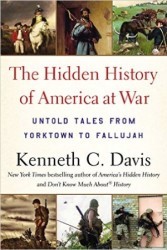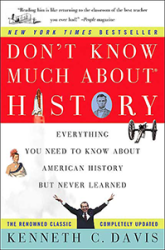Whatever Became Of…56 Signers? (3d in series)

Fair Copy of the Draft of the Declaration of Independence (Source New York Public Library)
Part 3 in a series of posts about the fates of the signers of the Declaration of Independence. A printer, a politician, a duelist, a Connecticut Yankee and the most famous signature in U.S. history. The next five in alphabetical order (A Yes after their names means they enslaved people; No means they did not.):
-Benjamin Franklin (Pennsylvania) America’s most famous man in 1776, Franklin was 70 years old at the time of the signing. Printer, publisher, writer, scientist, diplomat, philosopher –he was the embodiment of the Enlightenment ideal. A member of the draft committee that produced the Declaration, Franklin was a central figure in the independence vote and then helped the war effort by winning crucial French support for the America cause. But he lost no Fortune, reportedly tripling his wealth during the conflict. Franklin returned to the scene of the Declaration’s passage in 1787 to help draft the Constitution.. When he died at age 84 in 1790, his funeral was attended by a crowd equal to Philadelphia’s population at the time. Read more on Franklin at this National Park Service site. YES
–Elbridge Gerry (Massachusetts) A 32 year old merchant from Marblehead, Gerry (pronounced with a hard G like Gary) is much more famous for later dividing Massachusetts into oddly-shaped voting districts as the state’s governor. A cartoonist compared the districts to a salamander and the word “gerry-mandering” was born. Though he voted for independence, Gerry was not present to sign in August, signing later in the fall of 1776, He profited from the war and later joined the Massachusetts delegation to the Constitutional convention in 1787, although he refused to sign the Constitution. He became James Madison’s second vice president in 1813, but died in office in 1814 at age 70. NO
–Button Gwinnett (Georgia) An English-born plantation owner and merchant, he was 41 at the time of the signing. And didn’t last much longer. A political argument with a Georgia general led to a duel in which Gwinnett was mortally wounded. He died in 1777 at age 42, the second of the signers to die. (John Morton of Pennsylvania was first.) YES
–Lyman Hall ( Georgia) A Connecticut Yankee physician transplanted to Georgia plantation owner, Hall was 52 years old at the signing. A vocal patriot when Georgia was far more hesitant about independence, he first came to Philadelphia as a nonvoting delegate. Hall’s plantation was destroyed during the war when the British made their punishing attacks on the South. He later served as Georgia’s governor, dying at age 66 in 1790. YES
–John Hancock (Massachusetts) Born into a poor parson’s family in Lexington (National Parks Service site) , Hancock was sent to live with a wealthy uncle when his father died. He inherited his uncle’s shipping business and was one of America’s wealthiest men by the time he was thirty. A patriot leader in Boston, it was Hancock and Samuel Adams who the British sought to capture on that April 1775 night when the war began. President of the Continental Congress when independence was declared, he was 39 at the time of the signing. The outsized signature on the document cemented his fame in American lore. After the war, Hancock was governor of Massachusetts at the time of his death in 1793 at age 56. YES

Now In paperback THE HIDDEN HISTORY OF AMERICA AT WAR: Untold Tales from Yorktown to Fallujah

Don’t Know Much About® History: Anniversary Edition (Harper Perennial and Random House Audio)

Don’t Know Much About® the American Presidents (Hyperion Paperback-April 15, 2014)



